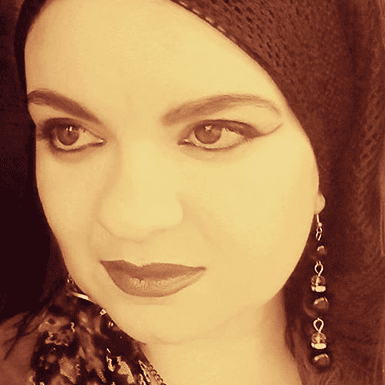Mats Svensson, a former Swedish diplomat whose personal experience of Palestine opened up the possibility of rethinking through Palestinian narratives, clarifies the role of diplomacy in the preface to his book, “Apartheid is a Crime. Portraits of the Israeli Occupation” (Cune Press, 2019). Diplomats, he declares, “could not call a thief a thief, a murderer, a murderer, colonialism, colonialism, apartheid, apartheid. The only thing that mattered was silent diplomacy. So silent that no one heard it.”
One of the ramifications of diplomatic silence has been the obliteration of Palestinian narratives in favour of a distorted view as to what constitutes Palestine and Palestinians. “How an uncontested truth could be so distorted?” asks Palestinian writer and academic Ramzy Baroud in his foreword to the book.
Svensson’s time in Palestine sharpens his observations, to the point that one can distinguish that at some point humanity gently asserts its presence. From the collective, marginalised and exploited Palestinians, we see individuals forming the collective, with different stories and experiences. Beyond the media and diplomatic stereotypes which simplify Palestinians for convenience, Svensson’s photography seeks out the places and stories which are generalised under terms such as human rights violations and the oppressed.There are altered landscapes and individual Palestinian people, each burdened with the ongoing Nakba trauma. “The storyteller, Mats, is as important as the story,” remarks Baroud. A few pages into the book, it is easy to discern why. Svensson narrates how the Palestine photography project started through his hiking and observing Palestinian life away from the stereotyped profiles. Being among Palestinians and seeing with them, an outsider immersed, the author and photographer reminisces on making eye contact “with the old woman who was carrying a life story of daily losses.”
READ: Israel Apartheid Week kicks off in South Africa
We are left to wonder what the losses are. Even with knowledge of the atrocities committed during the Nakba and its aftermath, there is no escaping the fact that many stories remain hidden for several reasons, among them the lack of opportunities for Palestinian narratives to take their rightful place at the helm. Svensson’s observation reads like a metaphor of the rest of the book and its contents; black and white photography of Palestine’s memory and the perpetual violations and humiliations endured under Israeli colonisation and apartheid.
The book references quotes by Palestinians, Israelis and international leaders, juxtaposed against portraits of people and landscapes. Diplomats, says Svensson, contributed to entrenching Israel’s military occupation. It is important that the author makes these statements in order to contextualise the visual material provided in the book. The diplomatic community and world leaders, in particular, are exposed for paying mere lip service to end Israel’s colonial occupation. It is impossible to take George W Bush and Barack Obama seriously when talking about peace when, on the ground, Israel’s presence and security narrative were perpetually given priority by them. However, adding such comments provides the necessary contrast between the Palestinian narrative and the diplomatic world, the latter being rhetorically predictable with disastrous consequences for the Palestinian people.
READ: Palestinians unite in post-apartheid South Africa
Accountability is indeed absent from relics of destruction pertaining to 1948 and the ugliness of the Apartheid Wall lacerating Palestinian territory, and everything in between, but it is not non-existent.
Palestine is present, in slivers of history which beckon for us to pay closer attention. Svensson’s photographs of Litfa, a village ethnically cleansed during the Nakba, for example, can be summed up in the author’s words: “This is where your resistance was born, your constant longing.”From the systematic ethnic cleansing which drove Palestinians from their land to the premeditated apartheid practices and destruction of the Gaza Strip, the photos speak for themselves. The changing landscapes also changed the people, while memory became a link to be protected at all costs, especially as the geophysical space became burdened with manifestations of Israeli colonialism and violence. The Apartheid Wall is a recurring subject in Svensson’s photography; it’s an enclosure most overwhelming when photos are taken from windows facing the monstrosity. Within the vicinity of the wall, looking out forces Palestinians to look back in. The photographs in the book are void of the hype associated with Banksy’s Walled-Off Hotel, and the absence of such glorified protest bordering on exploitation makes them stand out as the everyday reality of Palestinians.
Beneath the wall, five sewage pipes provide Palestinians with humiliating access to movement. “When I saw your stumbling walking in the sewage tunnel,” writes Svensson, “I got another lesson in what it means to live under Israeli humiliation.”
The photos of Gaza’s destruction and Palestinians in the enclave are particularly striking. The close-up portraits make the viewer wonder what it feels like to look at a displaced Palestinian from behind a camera. How do you look into a person’s eyes and understand each individual’s story from the heart?
OPINION: Africa women contribute to successful 15th Israel Apartheid Week
Svensson’s compelling photography and brief reflections show that there is more to Palestine than the carefully prepared depictions which have the potential to deceive rather than impart tangible meanings of Palestine and Palestinians. Most importantly, the book does not seek to impose any definitions upon the Palestinians themselves. The different citations from an entire spectrum of allegiances and agendas juxtaposed against Palestinian voices and the author’s photography show that placing the narrative of the people of Palestine at the helm really is possible, despite the diplomatic endeavours to drown out their voices and construct the Palestinians as simply products of foreign policy.



![Protest poster in London against Israel's Nation State Law [Apaimages]](https://i0.wp.com/www.middleeastmonitor.com/wp-content/uploads/2018/10/Israel-Apartheid.jpg?resize=500%2C333&ssl=1)
![South Africa stands with Palestine - Cartoon [Sabaaneh/MiddleEastMonitor]](https://i0.wp.com/www.middleeastmonitor.com/wp-content/uploads/2019/04/m6-4-2019.jpg?resize=920%2C571&ssl=1)






